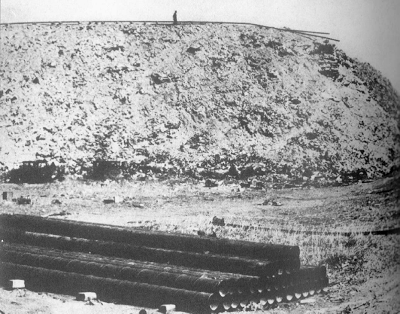The following was published on Long Island Business New’s Young Island on 3/13/13:
In case you haven’t noticed…my writing typically focuses on planning issues on Long Island. From Montauk, to Elmont, the issues that plague our aging suburbs can be transposed to similar regions across the country. However, I did not always focus on suburban issues. During my time at Fordham University, I became heavily involved with stewardship issues concerning New York City’s outer borough parks. Look west to Nassau’s neighbor Queens, you will find a troubling situation.
Sadly, attempts are being made to further encroach private-sector development upon the public spaces of Flushing Meadows-Corona Park. From the construction of a Major League Soccer Stadium to a proposed shopping mall by NYC EDC, Flushing Meadows is being given revitalization proposals for all of the wrong reasons.
Sorry New York City- but building a stadium or shopping mall is not always an appropriate generator of economic development (Syosset, take note…more on thatfor another time). The disparity between parks in various sections of the City is alarming. A recent New York Times piece highlighted both this disparity, and the plans City policymakers had for Flushing Meadows. Reading it, I was reminded me of the schemes that come out of Riverhead over the decades for EPCAL, which is never a good comparison to draw. A recent editorial in the Queens Chronicle nicely captured the inequity concerning support for the City’s open spaces:
John Paulson, a billionaire hedge fund manager, donated $100 million to Central Park last year, a gift believed to be the biggest ever provided by a private citizen to an American park. Make no mistake, he has every right to do so. But at the same time, Flushing Meadows got $5,000 in donations last year. How sad. (Source: Preserve, Don’t Pervert Flushing Meadows Park, Queens Chronicle, 2/28/13)
They’re right. It is sad, for the park has a fascinating history. F. Scott Fitzgerald described the location in The Great Gatsby as follows:
About half way between West Egg and New York the motor road hastily joins the railroad and runs beside it for a quarter of a mile so as to shrink away from a certain desolate are of land. This is a valley of ashes-a fantastic farm where ashes grow like wheat into ridges and hills and grotesque gardens, where ashes take the forms of house and chimneys and rising smoke and finally, with a transcendent effort, of men who move dimly and already crumbling through the powdery air. Occasionally, a line of grey car crawls along an invisible track, gives out a ghastly creak and comes to rest and immediately the ash-grey men swarm up with leaden spades and stir up an impenetrable cloud which screens their obscure operations from your sight…The valley of ashes is bounded on one side by a small foul river, and when the drawbridge is up to let barges through, the passenger on waiting trains can start at the dismal scene for as long as half an hour.
Source: “Flushing,” Jason D. Antos, reposted by Macaulay Honors College at Baruch, Professor Munshi-South and Vanessa Castanier
Robert Moses, often cast as the villainous power broker, saw these fields and envisioned a new crown-jewel of the City’s park system rising, literally, like a Phoenix from the ashes. After the relocation of 50 million cubic tons of garbage and ash (which went on to lay the foundation for the Van Wyck Expressway) from 1934 to 1939, Flushing Meadows Park was completed. What replaced the ash fields was a park with a 1,255 acre footprint (Central Park has 843 acres in comparison) and is a marvel of engineering and park design.
Since the glory days of both the ’39 and ’64 World’s Fairs, the park has been in a state of steady decline. While most of New York City has since recovered from the financial crisis and grittiness of the 1970s, one couldn’t tell in Flushing Meadows. This has to change, but not in the ways being proposed by policymakers.
The lesson is the same in Queens, Nassau, Suffolk, and anywhere else- A private sector shopping mall, like sewers, is not always the answer to an area’s economic woes. Economic growth efforts do not belong on public parkland or public open spaces. Private development should not be needed to help revitalize this park, or any park. The stewardship of our open spaces is a municipal responsibility- be it that of City, County, local or village governments. The recession has hit government hard, but we cannot let temporary economic conditions dictate our land use policies.
Long Islanders- take note that just to the west, there lays a diamond in the rough that poor land use policy is threatening. Public spaces are meant for the public. If we let them deteriorate, we are just as responsible as the developers proposing the malls, stadiums and other attempts to “build our way out” of the recession. Like I seem to always say, it is less costly to prevent land use mistakes than it is to rectify them.












